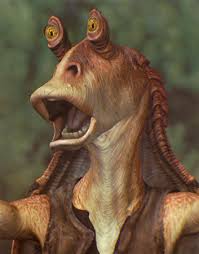Leviathan is the first Young Adult novel that I’ve read in a long while, and it managed to keep my attention focused for 434 pages by blending two things I love: vegetarianism and Star Wars. Let me unpack this a little bit.
Leviathan is set in a universe in which Darwin discovered the secrets of DNA. There are two predominant ideologies to which the nations of the world subscribe. Darwinists believe in harnessing deliberately evolved creatures for all manner of purposes, including war, while the Clankers put their faith in steam-powered mechanics. The father of one of the main protagonists, Franz Ferdinand, is assassinated, plunging the world’s nations into war.
Instead of Lucas’ farmboy wanting to join the Rebellion and find adventure, we have a prince that is thrust into adventure against his will. Alek is suspicious of his captors and allies, always questioning the motives of those that direct his path, whereas Luke is perhaps too trusting and eager to jump in headfirst. Alek’s parents have lived their lives in the public eye and under constant scrutiny, while Luke must gradually uncover the secrets surrounding his heritage. I think the case could be made that Prince Alek is, in many ways, an inverse Luke Skywalker.

Do you see it? In my mind Westerfeld is signalling me with visual subtlety. Upon seeing this illustration, what jumps out at me is one of the cooler machines to come to life in the Star Wars Trilogy – the ATST Walker. It seems there are two ATST walkers hiding as the legs of Westerfeld’s (or Thompson, the illustrator’s) Stormwalker. Of course, I could be projecting here… that’s likely the case, because I also a see a bit of JarJar Binks in those leg units.


Of course, the look of Leviathan is also very similar to that of Star Wars. This is largely because they’re both drawing on the same visual source material. Lucas based the designs for his Empire on Nazi Germany, and while Alek and his entourage are Austrian, they share the same aesthetic as the First World War-era Germans they find themselves fighting. It’s all a lot of spiked helmets and iron crosses, and while the ‘Nazi’ element has not yet surfaced (Leviathan takes place in 1914), it’s easy to see that, farther along Westerfeld’s planned overarching narrative, the Clankers may begin adopting Darwinist technologies to promulgate their master race and create even deadlier weapons of war.
Now onto the animals. Westerfeld taps into something that I’ve been noticing more and more in popular film and fiction – vegetarianism and veganism. It’s a long-standing convention of cinema that if you want your audience to truly hate a character, have them abuse an animal (see Jack Nicholson in As Good As It Gets or Eddie Hassell in The Kids Are Allright). Conversely, characters can show their hearts of gold by caring for little creatures. Good guys never hurt the dogs that attack them, because those dogs (typically guard dogs employed by bad men) are just acting according to their nature. Instead, the hero will distract them with a steak or sedate them, and then continue with their quest.
As such, rarely will you see the true hero of a story chowing down on some chicken wings or a Big Mac. Think of Dinner For Schmucks… while Paul Rudd’s character has a confused conscience and a questionable ethical code, Steve Carrell’s character is single-minded in his drive to promote empathy and help others. In an extreme act of empathy, he jumps in front of a moving vehicle to salvage a dead mouse. He drinks almond milk while watching television and is horrified at the lobster feast served at the much-anticipated dinner. He is able to role-play, he ‘gets’ the animal art of Jemaine Clement, and he is the one to point out (and transcend) the cruelty of the analysts’ sport, in which they consume, as opposed to celebrate, personalities. Many directors and writers have taken the stance that an inherently ‘good’ character is one that extends his or her empathy into food choices.

With Westerfeld’s Darwinists using engineered creatures for war, it is perhaps inevitable that he address issues of meat consumption. And address it he does. In order for the Darwinists to succeed in fusing living creatures with control mechanisms, they must work with the biology. Thus a pilot at the helms of a flying creature must consider the animal’s impulses – fear, hunger, instinct – and work within them. Like a rider on a horse, a relationship is formed – one that is heightened by understanding and respect. Thus the Darwinists hold creatures, and all life, in the highest regard. While there is little detail about what the Darwinists eat on a daily basis, their level of empathy towards animals is made clear, as illustrated in this passage, as the protagonists (one Darwinist and one Clanker) make their way through the belly of the Leviathan, a living airship:
“This is… disgusting. We’re inside an animal!”
Suddenly the tilted walkway beneath his feet felt slippery and unstable.
Dylan laughed… “Aye but the skins of your zeppelins are made of cattle gut. That’s like being inside an animal, isn’t it? And so’s wearing your leather jacket!”
“But this one’s alive!” Alek sputtered.
“True… and being inside a dead animal is much more awful, if you think about it. You Clankers really are an odd bunch.” (Westerfield; 255-6)
The first chapter of Leviathan sets the stage for a narrative which pierces and plays with tropes that have been trotted out time and again in adventure narratives. Westerfeld, however, injects a good dose of revisionism and imagination (not to mention gender-bending), creating new playgrounds for Leviathan to explore. It will be interesting to see how these elements play out through the rest of the trilogy.
Thanks for reading.